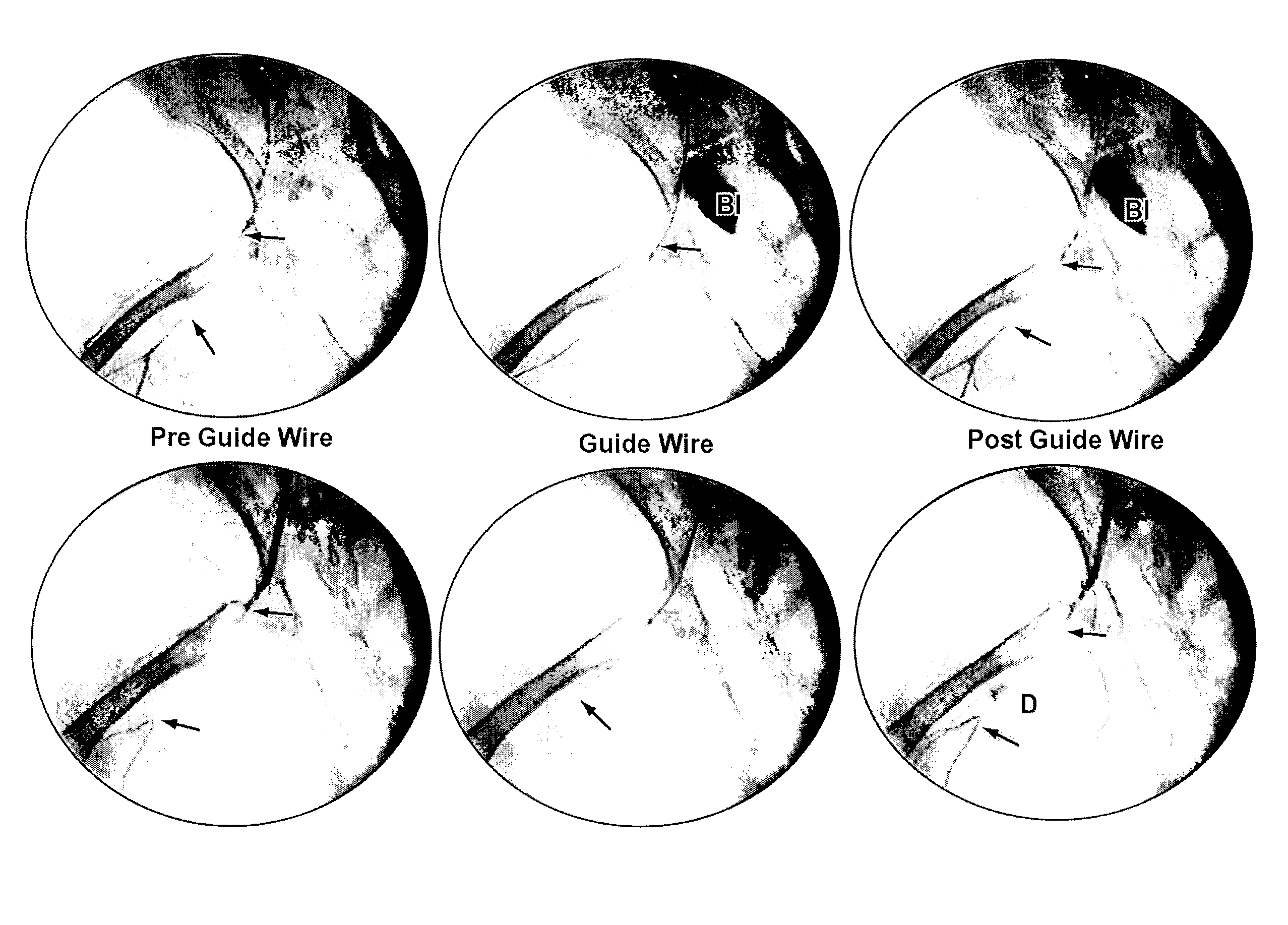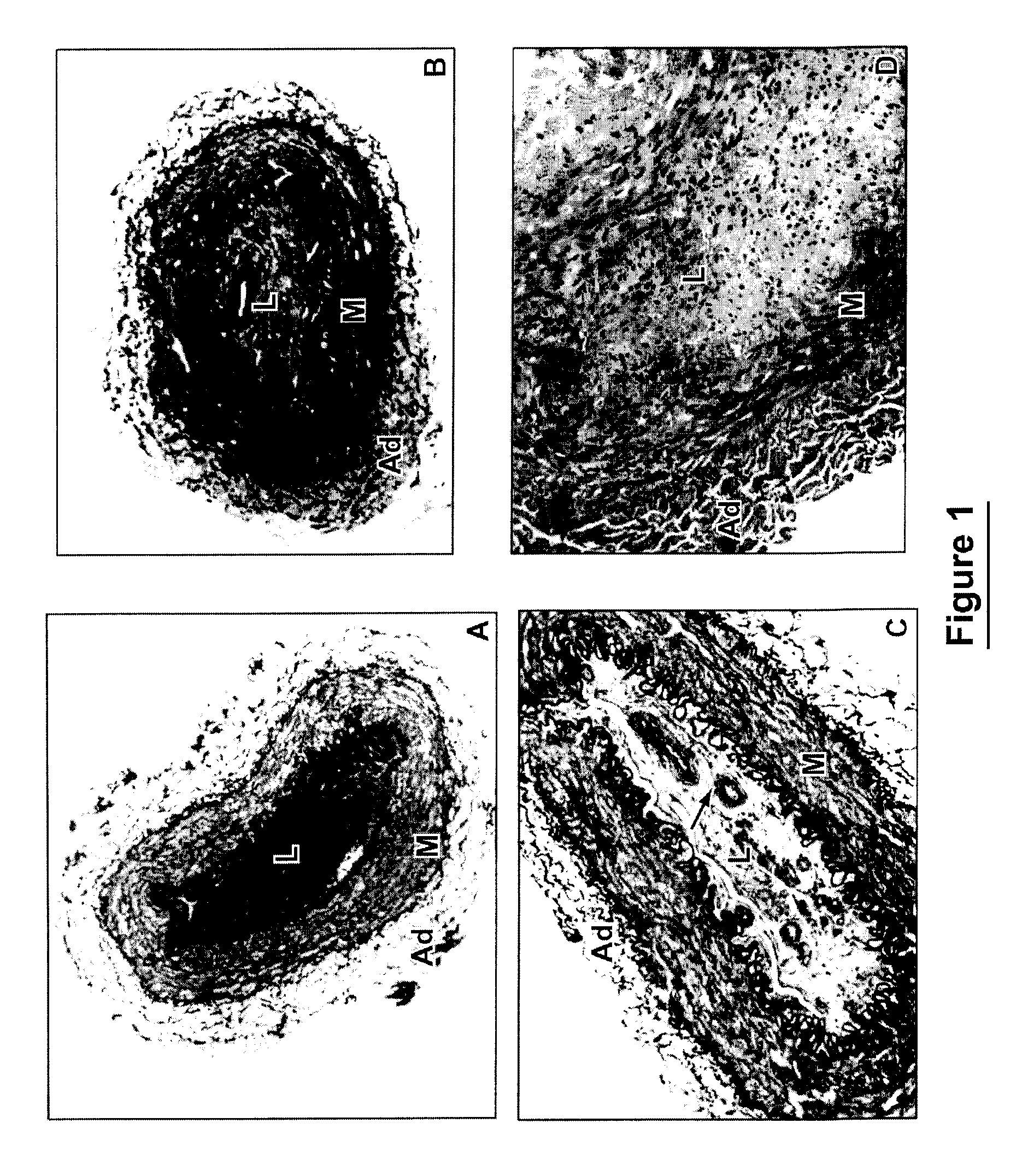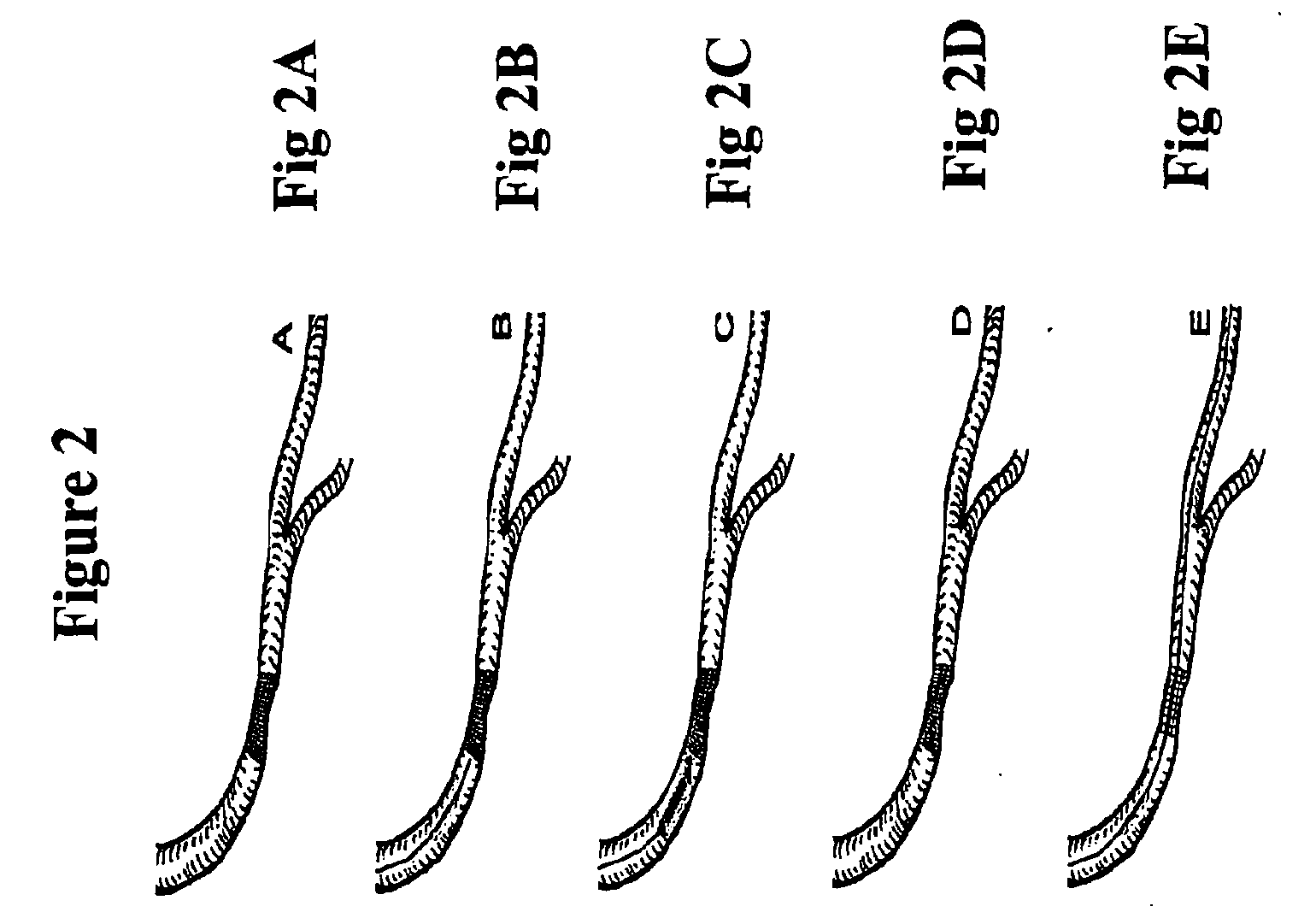Use of collagenase to facilitate guide wire crossing in total arterial occlusions
a technology of occluded arteries and guide wires, which is applied in the direction of drug compositions, peptide/protein ingredients, extracellular fluid disorders, etc., can solve the problems of reduced procedural success rates compared, high restnosis rate, and limited efficacy of purely mechanical design of stiffer and more powerful guide wires to push through fibrotic total occlusions. , to achieve the effect of facilitating guidewire passage, facilitating research and development methods, and facilitating
- Summary
- Abstract
- Description
- Claims
- Application Information
AI Technical Summary
Problems solved by technology
Method used
Image
Examples
Embodiment Construction
[0053] In accordance with the present invention, an approach to significantly improve the procedural results of chronic occlusions is described. A method of local delivery of a therapeutic effective amount of a proteolytic enzyme-containing formulation having a matrix-degrading enzyme, belonging to the family of matrix metalloproteinases, serine elastases, trypsin, neutral protease, chymotrypsin, aspartase, cysteinase and clostripain, can effectively alter the matrix content of the occluding plaque in a way that significantly facilitates guide wire crossing and substantially improves procedural success rates, without causing adverse effects of these enzymes on medial layers of the occluded artery and in adjacent non-occluded arterial segments.
Pathology of Chronic Total Occlusions in Human Coronary Arteries
[0054] The underlying atherosclerotic plaques in CTO are predominantly fibrocalcific39, consisting of smooth muscle cells, extracellular matrix and calcium and variable amounts ...
PUM
| Property | Measurement | Unit |
|---|---|---|
| pressure | aaaaa | aaaaa |
| pressure | aaaaa | aaaaa |
| pressure | aaaaa | aaaaa |
Abstract
Description
Claims
Application Information
 Login to View More
Login to View More - R&D
- Intellectual Property
- Life Sciences
- Materials
- Tech Scout
- Unparalleled Data Quality
- Higher Quality Content
- 60% Fewer Hallucinations
Browse by: Latest US Patents, China's latest patents, Technical Efficacy Thesaurus, Application Domain, Technology Topic, Popular Technical Reports.
© 2025 PatSnap. All rights reserved.Legal|Privacy policy|Modern Slavery Act Transparency Statement|Sitemap|About US| Contact US: help@patsnap.com



